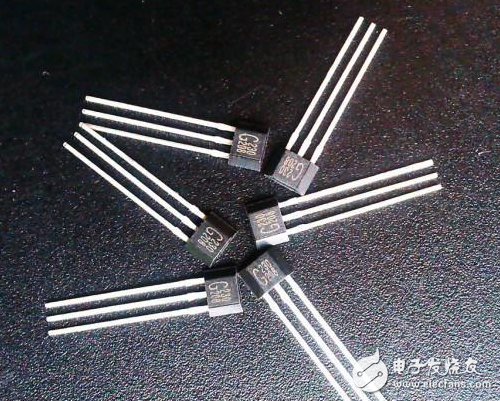The Hall element is a semiconductor to which a Hall effect is applied. Generally used in the determination of rotor speed in motors, such as the drum of video recorders, cooling fans in computers, etc.; is a magnetic sensor based on Hall effect, has developed into a variety of magnetic sensor product families, and has been widely application. The physical meaning of the Hall element sensitivity is the magnitude of the Hall potential when the unit magnetic induction intensity unit is used to control the current.
Hall element working principleThe Hall element uses a Hall effect semiconductor.
The Hall effect refers to a physical phenomenon in which a lateral potential difference occurs when a magnetic field acts on a carrier metal conductor or a carrier in a semiconductor. The Hall effect of metal was discovered by American physicist Hall in 1879. When a current is passed through the metal foil, if a magnetic field is applied in a direction perpendicular to the current, a lateral potential difference occurs on both sides of the metal foil. The Hall effect in semiconductors is more pronounced than in metal foils, while ferromagnetic metals exhibit a very strong Hall effect below the Curie temperature.
A variety of sensors can be designed using the Hall effect. The basic relationship of the Hall potential difference UH is:
UH=RHIB/d (1) RH=1/nq(metal) (2)
Where RH - Hall coefficient; n - the number of carriers or free electrons per unit volume; q - the amount of electrons; I - the current through; B - the magnetic induction perpendicular to I; ―The thickness of the conductor.

For semiconductors and ferromagnetic metals, the Hall coefficient expression is different from equation (2) and is omitted here.
Since the magnetic field around the energized wire is proportional to the current in the wire, the Hall element can be used to measure the magnetic field to determine the wire current. Using this principle, a Hall current sensor can be designed. The advantage is that it does not make electrical contact with the circuit under test, does not affect the circuit under test, does not consume the power of the power source to be tested, and is particularly suitable for high current sensing.
If the Hall element is placed in an electromagnetic field with an electric field strength of E and a magnetic field strength of H, a current I will be generated in the element, and the Hall potential difference generated at the same time on the element is proportional to the electric field strength E, if it is measured again. The magnetic field strength of the electromagnetic field, then the instantaneous value P of the power density of the electromagnetic field can be determined by P = EH.
A Hall power sensor can be constructed by this method.
If the switch integrated with the Hall element is regularly arranged on the object at a predetermined position, the pulse signal can be measured from the measuring circuit when the permanent magnet mounted on the moving object passes through it. The displacement of the moving object can be sensed according to the pulse signal train. If the number of pulses sent per unit time is measured, the speed of movement can be determined.

Place the metal sheet in a magnetic field so that the magnetic field passes vertically through the plane of the sheet. A current is applied in the longitudinal direction of the sheet, and a weak voltage appears on both sides of the sheet. This is the Hall effect, the voltage generated laterally is called the Hall voltage, symbol VH.

The Hall coefficient RH = (en) - 1 = C; n is the concentration of carriers in the sheet, e is the electron charge amount, and d is the thickness of the sheet.

KH——Hall sensitivity, which indicates the strength of the Hall effect generated by the element, that is, the magnitude of the Hall voltage when the unit magnetic induction B and the unit control current I.
The sensitivity of the Hall element is related to which factorsThe sensitivity of the Hall element in the Hall effect is related to both the thickness of the Hall element and the concentration of the carrier.
5.1 Home Theater Speaker,Home Theatre 5.1,Wireless Surround Sound Speakers,Bluetooth Surround Sound System
GUANGZHOU SOWANGNY ELECTRONIC CO.,LTD , https://www.jerry-power.com